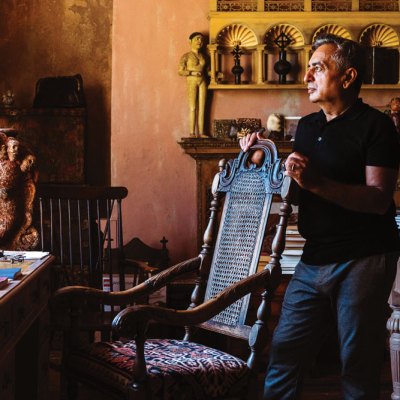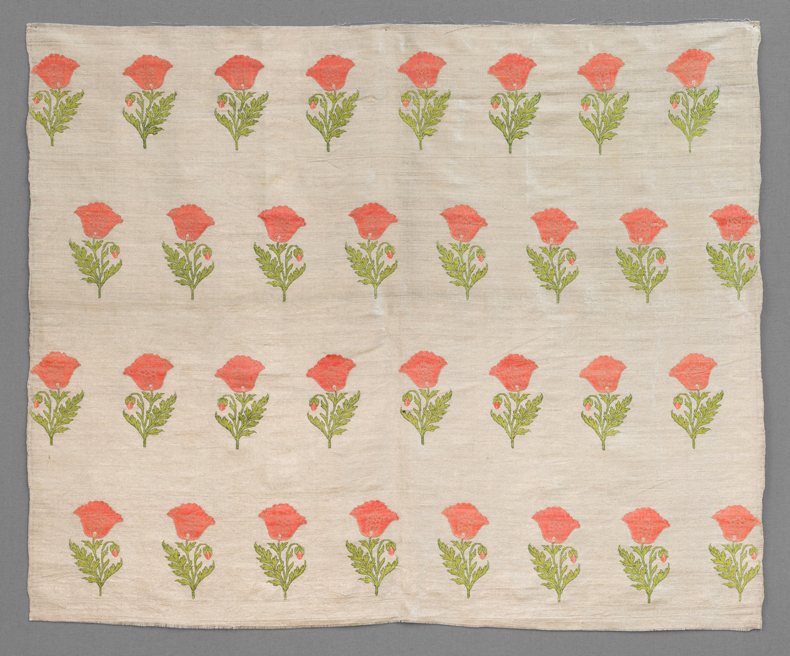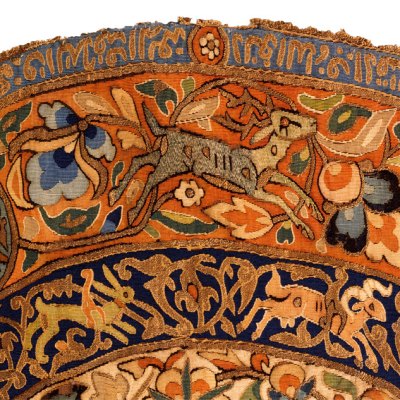

Persian silk textile pieced with two panels with design of columns of flowers (17th century), maker unknown. Saint Louis Art Museum
The Saint Louis Art Museum holds a remarkable collection of textiles from the Arab world, stretching back from Fatimid-dynasty Egypt (909–1171) to Ottoman Turkey (1281–1924). This exhibition, which spans some 700 years of textile production and includes several works that have never before been on public display, gives a strong sense of just how far Islamic designs spread throughout Asia and Europe (13 June–4 January 2026). There are several impressively well-preserved Spanish pieces dating from the Nasrid period (1232–1492) that would have been displayed as curtains or wall hangings; many Christians prized Islamic textiles to the point of using them in their own religious ceremonies, as wrappers for relics or liturgical garments. Also on show are a number of silk tapestry works with tiraz, or inscriptions – a style that was popular in the Islamic world from the seventh to the 13th century.
Find out more from the Saint Louis Art Museum’s website.
Preview below | View Apollo’s Art Diary
Persian silk textile panel with design of flowering plants and pools of coiled waves (early 17th century), maker unknown. Saint Louis Art Museum

Length of Indian silk with design of poppies (late 17th century), maker unknown. Saint Louis Art Museum

Spanish silk panel with design of bands of Arabic inscriptions in Thuluth script alternating with geometric motifs (early 15th century). Saint Louis Art Museum


